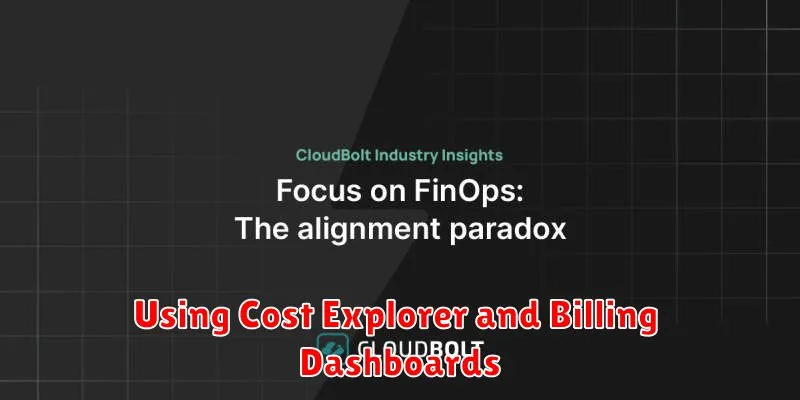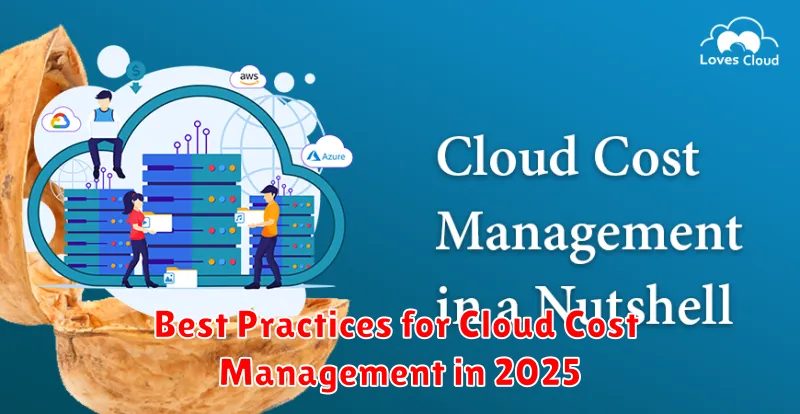Cloud cost management is more crucial than ever in 2025. As organizations increasingly rely on cloud services for their operations, uncontrolled spending can quickly erode profitability. This article explores the best practices for cloud cost optimization in 2025, providing actionable strategies to gain control over your cloud expenditure and maximize your return on investment. We will delve into topics such as cloud cost visibility, resource optimization, budgeting and forecasting, and the importance of leveraging automation and cloud financial management tools. Understanding these best practices will empower you to effectively manage your cloud resources and achieve significant cost savings.
Navigating the complexities of cloud pricing models and staying ahead of the curve requires a proactive and strategic approach to cloud cost management. This guide will equip you with the knowledge and techniques necessary to implement effective cloud cost optimization strategies, covering areas like rightsizing instances, leveraging reserved instances and spot instances, and implementing cloud governance policies. By adopting these best practices, you can not only reduce your cloud costs but also improve operational efficiency and ensure that your cloud resources are aligned with your business objectives in 2025 and beyond.
Why Cloud Costs Spiral Out of Control
Cloud computing offers unparalleled flexibility and scalability, but these benefits can quickly translate into runaway costs if not managed effectively. One of the most common culprits is overprovisioning. Organizations often allocate more resources than necessary, leading to wasted spending on idle capacity.
Another key driver is the lack of visibility into cloud spending. Without proper monitoring and reporting tools, it’s difficult to track where money is being spent and identify areas for optimization. This is exacerbated by the complex pricing models of cloud providers, making it challenging to forecast and control costs.
Orphaned resources, such as unused virtual machines and storage volumes, contribute significantly to unnecessary expenses. These resources are often forgotten after projects end or configurations change, continuing to accrue charges even though they are no longer needed.
Furthermore, the decentralized nature of cloud adoption within organizations can lead to inconsistent cost management practices. Different teams may utilize different services and purchasing options, creating a fragmented view of overall cloud expenditure and hindering effective cost control efforts.
Setting Budgets and Alerts
Budgeting and alerting are foundational for effective cloud cost management. Establish budgets aligned with your spending plans. These budgets should be granular, reflecting different departments, projects, or even specific resources.
Configure alerts to notify you when costs approach or exceed predefined thresholds. This proactive approach allows you to address potential overspending before it significantly impacts your budget. Consider tiered alerts: warnings at different percentages of your budget (e.g., 80%, 90%, 100%) allow for increasingly urgent responses.
Modern cloud platforms offer sophisticated budgeting and alerting tools. Leverage these tools to automate budget creation, monitoring, and alert delivery. Explore options like automated budget reports and integration with communication platforms for real-time notifications.
Using Cost Explorer and Billing Dashboards

Cost Explorer and billing dashboards are indispensable tools for gaining insights into your cloud expenditure. Cost Explorer provides a comprehensive view of your costs, allowing you to analyze spending patterns over time, break down costs by service, and identify areas for potential savings. Its interactive interface enables you to explore data visually, filter by specific criteria, and forecast future spending based on current trends.
Leveraging billing dashboards alongside Cost Explorer offers a more holistic financial overview. These dashboards typically present summarized billing information, outstanding balances, and payment history. They are crucial for tracking overall cloud spending and ensuring timely payments, complementing the detailed analysis provided by Cost Explorer.
Regularly reviewing both Cost Explorer and billing dashboards is a key practice for proactive cost management. By actively monitoring spending, you can identify anomalies, optimize resource utilization, and prevent unexpected cost overruns.
Rightsizing and Instance Scheduling
Rightsizing is the process of matching instance types to workload demands. This involves analyzing CPU utilization, memory usage, and other metrics to determine if instances are over-provisioned or under-provisioned. Over-provisioning leads to wasted spending on unused resources, while under-provisioning can negatively impact performance. By selecting the most appropriate instance size, organizations can optimize costs without compromising performance.
Instance scheduling complements rightsizing by automating the start and stop times of instances. Non-production environments, such as development, testing, and staging, often don’t require 24/7 uptime. Scheduling these instances to run only during business hours or when needed can significantly reduce costs. Automated scheduling tools allow for flexible schedules based on individual project needs and eliminate the manual effort of starting and stopping instances.
The combined practice of rightsizing and instance scheduling offers a powerful approach to cloud cost optimization. By ensuring resources are appropriately sized and only running when necessary, organizations can achieve substantial cost savings and improve their overall cloud spending efficiency.
Tagging Resources for Transparency
Tagging is a fundamental aspect of effective cloud cost management. It allows you to categorize and track your cloud resources, providing granular visibility into spending patterns.
By implementing a comprehensive tagging strategy, organizations gain valuable insights into which departments, projects, or environments are consuming the most resources. This transparency enables informed decision-making regarding cost optimization efforts.
Consider tagging resources with key identifiers such as:
- Department/Team
- Project/Application
- Environment (e.g., production, development, testing)
- Cost Center
Consistency is crucial for accurate reporting. Establish clear tagging policies and enforce them across the organization. Utilize automation tools to streamline the tagging process and minimize manual effort. Regular audits of tagging practices help maintain data integrity and ensure ongoing accuracy.
Avoiding Unused Resources
One of the most significant sources of cloud waste is unused resources. These can range from idle virtual machines and unattached storage volumes to orphaned databases and unused IP addresses. Regularly identifying and removing these resources is crucial for effective cloud cost management.
Implement resource tagging and labeling policies to gain clear visibility into the purpose and ownership of each resource. This allows for easier tracking and identification of unused resources. Utilize cloud provider tools or third-party solutions that automatically scan for and report on idle resources.
Establish clear procedures for decommissioning resources that are no longer needed. Automate the process wherever possible to ensure timely removal and minimize manual effort. Consider using features like automated shutdown schedules for non-production environments to reduce costs during periods of inactivity.
Regularly review and optimize resource provisioning. Right-sizing instances and storage volumes ensures that you are only paying for the resources you actually need. Implement monitoring and alerting to identify resources that are consistently underutilized and consider downsizing or terminating them.
Forecasting Costs and Trends
Accurately forecasting cloud costs is crucial for effective budget management. Predictive analytics plays a vital role in understanding potential future expenses. By analyzing historical data, usage patterns, and anticipated growth, organizations can proactively allocate resources and avoid unexpected cost overruns.
Leveraging cloud provider tools and third-party solutions provides valuable insights into cost drivers. Regularly reviewing forecasts allows for adjustments to resource allocation and optimization strategies. This ongoing monitoring helps maintain cost control and adapt to changing business needs.
Staying informed about industry trends is also essential. Advancements in cloud technologies, pricing models, and service offerings can significantly impact future costs. Keeping abreast of these developments enables informed decision-making and helps organizations stay ahead of the curve.

